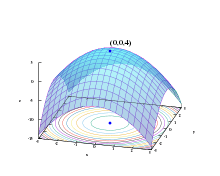Successive linear programming
Successive Linear Programming (SLP), also known as Sequential Linear Programming, is an optimization technique for approximately solving nonlinear optimization problems.[1]
Starting at some estimate of the optimal solution, the method is based on solving a sequence of first-order approximations (i.e. linearizations) of the model. The linearizations are linear programming problems, which can be solved efficiently. As the linearizations need not be bounded, trust regions or similar techniques are needed to ensure convergence in theory. [2]
SLP has been used widely in the petrochemical industry since the 1970s. [3]
See also
References
- (Nocedal & Wright 2006, p. 551)
- (Bazaraa, Sheraly & Shetty 1993, p. 432)
- (Palacios-Gomez et al.)
Sources
- Nocedal, Jorge; Wright, Stephen J. (2006). Numerical Optimization (2nd ed.). Berlin, New York: Springer-Verlag. ISBN 978-0-387-30303-1.CS1 maint: ref=harv (link)
- Bazaraa, Mokhtar S.; Sherali, Hanif D.; Shetty, C.M. (1993). Nonlinear Programming, Theory and Applications (2nd ed.). John Wiley & Sons. ISBN 0-471-55793-5.CS1 maint: ref=harv (link)
- Palacios-Gomez, F.; Lasdon, L.; Enquist, M. (October 1982). "Nonlinear Optimization by Successive Linear Programming". Management Science. 28 (10). doi:10.1287/mnsc.28.10.1106.CS1 maint: ref=harv (link)
This article is issued from Wikipedia. The text is licensed under Creative Commons - Attribution - Sharealike. Additional terms may apply for the media files.
